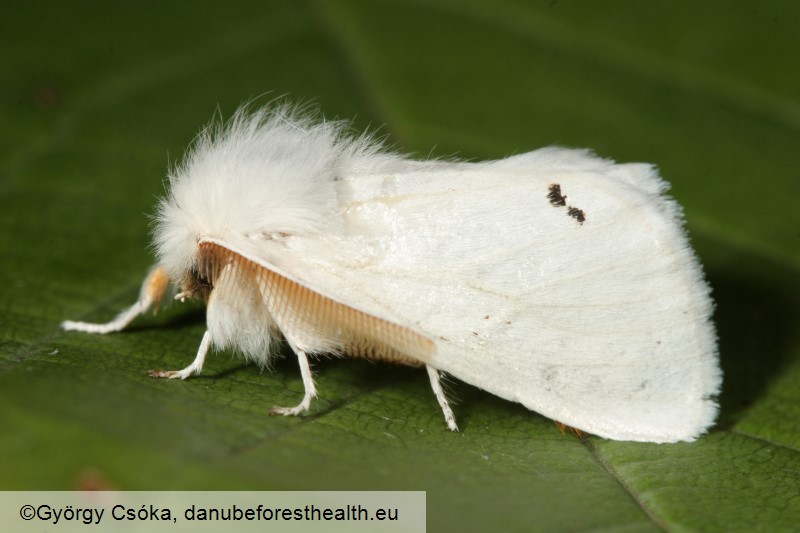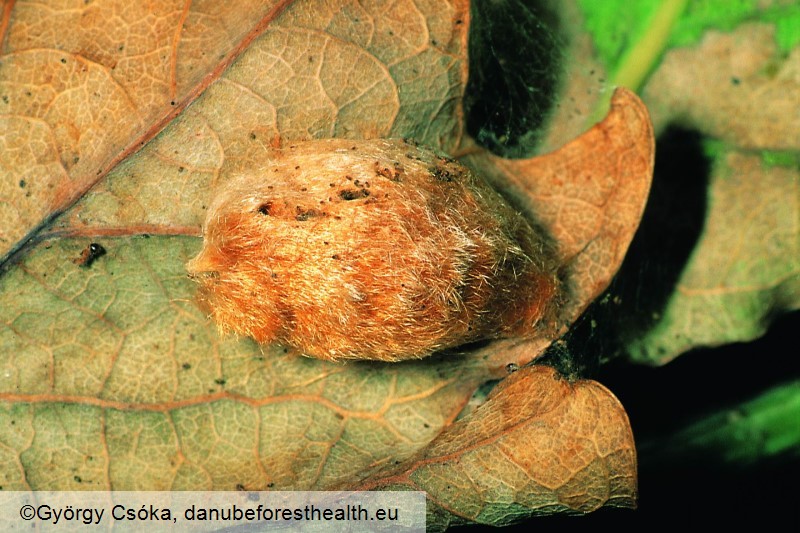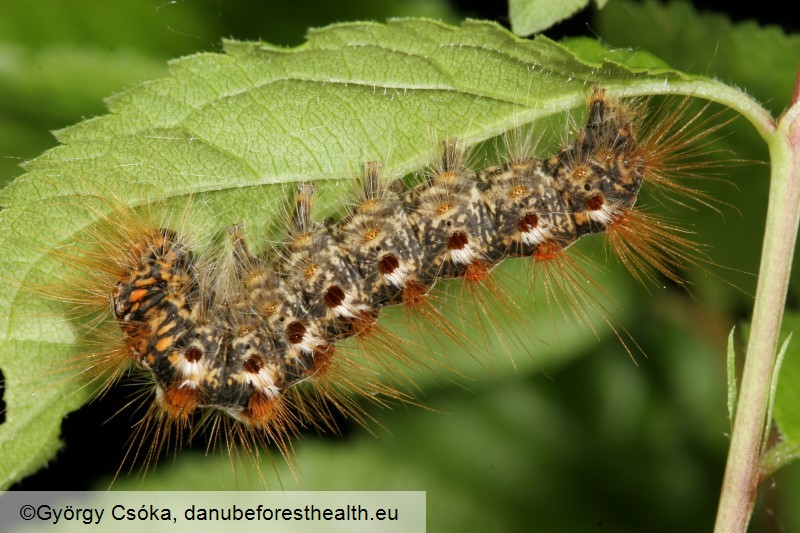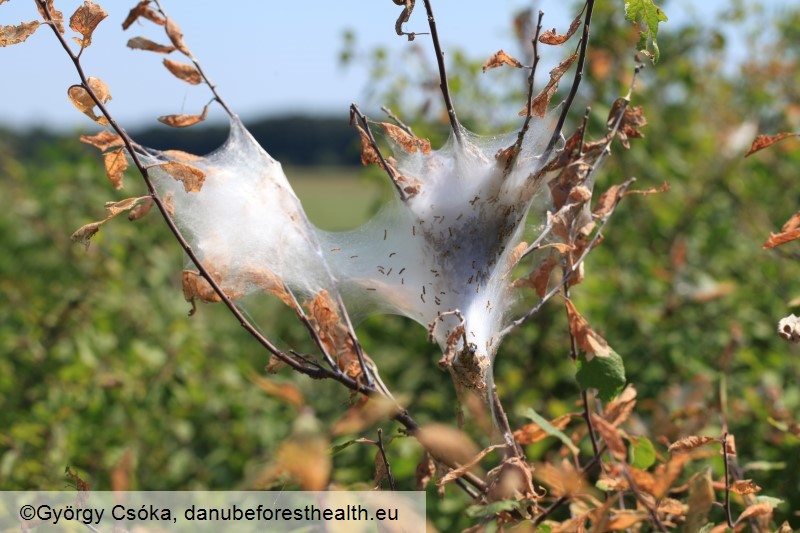Animalia
Brown-tail moth
Euproctis chrysorrhoea
Maarten de Groot
|
|

Fig. 1. Adult of Euproctis chrysorrhoea

Fig. 2. Eggs of Euproctis chrysorrhoea covered by brown hairs

Fig. 3. Larva of Euproctis chrysorrhoea

Fig. 4. Silken tent in which larva of Euproctis chrysorrhoea hibernate

Fig. 5. Feeding damage of larvae Euproctis chrysorrhoea in the canopy
DETECTION PERIOD:
June-July (flight period), August-April (silken tents), April- June (damage)
DESCRIPTION:
The adult is a white moth with a typical reddish-brown tip of the abdomen (wingspan is 36–42mm). The males have a brown color on the underside of the forewing. Females have a large body. The eggs are laid on the underside of the leaf in one cluster of 200 to 400 eggs. The eggs covered with brown hairs coming from the anal tuft of the female. The larva is brown with white markings and has two prominent red spots towards the tail end. In addition, the larva is hairy. The larvae are preparing silken tents between the branch tip leaves and the twigs in which it pupates.
HABITAT:
This species is polyphagous and feeds on deciduous trees in natural habitats, nurseries, plantations and urban areas.
STATUS:
The species occurs in most of the REFOCuS study area.
IMPACT:
The brown-tail moth can reach high densities and therefore can severely defoliate trees. It is also problematic for fruit trees. The larvae are very hairy and the broken hairs can on contact with the skin cause very itchy rashes and breathing difficulties.
SIMILAR SPECIES:
The combinations of a white moth with brown tail, makes it a very characteristic for this species. It is similar to Euproctis similis, but E. similis has a yellow tail tuft. Also the caterpillars and the silken tent are very characteristic.
|